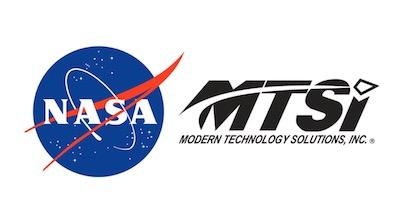Sun, Oct 21, 2018
Will Work On NASA Traveler Project Through A Space Act Agreement
NASA and Modern Technology Solutions, Inc. (MTSI) will partner over the next 24 months to develop a framework for autonomous aircraft that can be used to achieve FAA certification. For MTSI, it will be the company’s first ever NASA Space Act Agreement, which enables it to partner with NASA Armstrong on the NASA Traveler Project.

The objective of this NASA-led project, termed Resilient Autonomy, a Joint Capability Technology Demonstration (JCTD) through Office of Under-Secretary of Defense Emerging Capabilities office (OUSD/EC) is to develop a robust architecture and methodology for certifying fully autonomous systems by using a technique known as multi-mode run-time assurance or MM-RTA. This technique places a deterministic “wrapper” around the autonomous system’s non-deterministic software in order to safely bind the untrusted system’s behavior.
“MTSI is very excited to partner with NASA on this critical initiative as part of a collaborative effort with other industry partners bringing various autonomous system technologies to the project, that will establish the foundation architecture and methodology for how organizations certify the non-deterministic algorithms central to all autonomous vehicles,” stated Russell Wolfe, MTSI’s Vice President of Engineering. “I can’t imagine a more meaningful project to apply our agile software development expertise and best practices.”
”A key element of our strategy is the development of differentiated capabilities that apply broadly to customers across DoD, Civil, and Commercial markets,” said Kevin Robinson, MTSI CEO. “MTSI has partnered with NASA on autonomous system development and certification for over 20 years and this agreement represents a great opportunity to cooperatively develop and transition key technologies that will have a positive impact on next generation aviation.”
MTSI’s self-funded Innovation Program will help develop software code and algorithms that will be part of the core Expandable Variable Autonomy Architecture (EVAA) and supporting safety monitors and modules under the terms of the Space Act Agreement.
(Source: MTSI news release)
More News
From 2023 (YouTube Edition): "Ain’t Your Daddy’s Super Cub”—Don Wade Co-owned by Don and Ron Wade—the former of Don’s Dream Machines, a storied >[...]
Pilot-Rated Passenger Reported That The Pilot Did Not Adequately “Round Out” The Landing Flare And The Airplane Bounced And Yawed To The Right Analysis: The pilot state>[...]
Dead Reckoning Dead reckoning, as applied to flying, is the navigation of an airplane solely by means of computations based on airspeed, course, heading, wind direction, and speed,>[...]
Aero Linx: Lake Amphibian Club This website is created and sponsored by the Lake Amphibian Club, to help spread the word about these wonderful, versatile amphibians that can land j>[...]
“I am deeply honored to be sworn in as NASA administrator. NASA’s mission is as imperative and urgent as ever — to push the boundaries of human exploration, ignit>[...]
 Classic Aero-TV: In Praise of Alabamas Patriot Aircraft USA
Classic Aero-TV: In Praise of Alabamas Patriot Aircraft USA NTSB Final Report: Cirrus Design Corp SR22
NTSB Final Report: Cirrus Design Corp SR22 ANN's Daily Aero-Term (12.21.25): Dead Reckoning
ANN's Daily Aero-Term (12.21.25): Dead Reckoning ANN's Daily Aero-Linx (12.21.25)
ANN's Daily Aero-Linx (12.21.25) Aero-News: Quote of the Day (12.21.25)
Aero-News: Quote of the Day (12.21.25)



